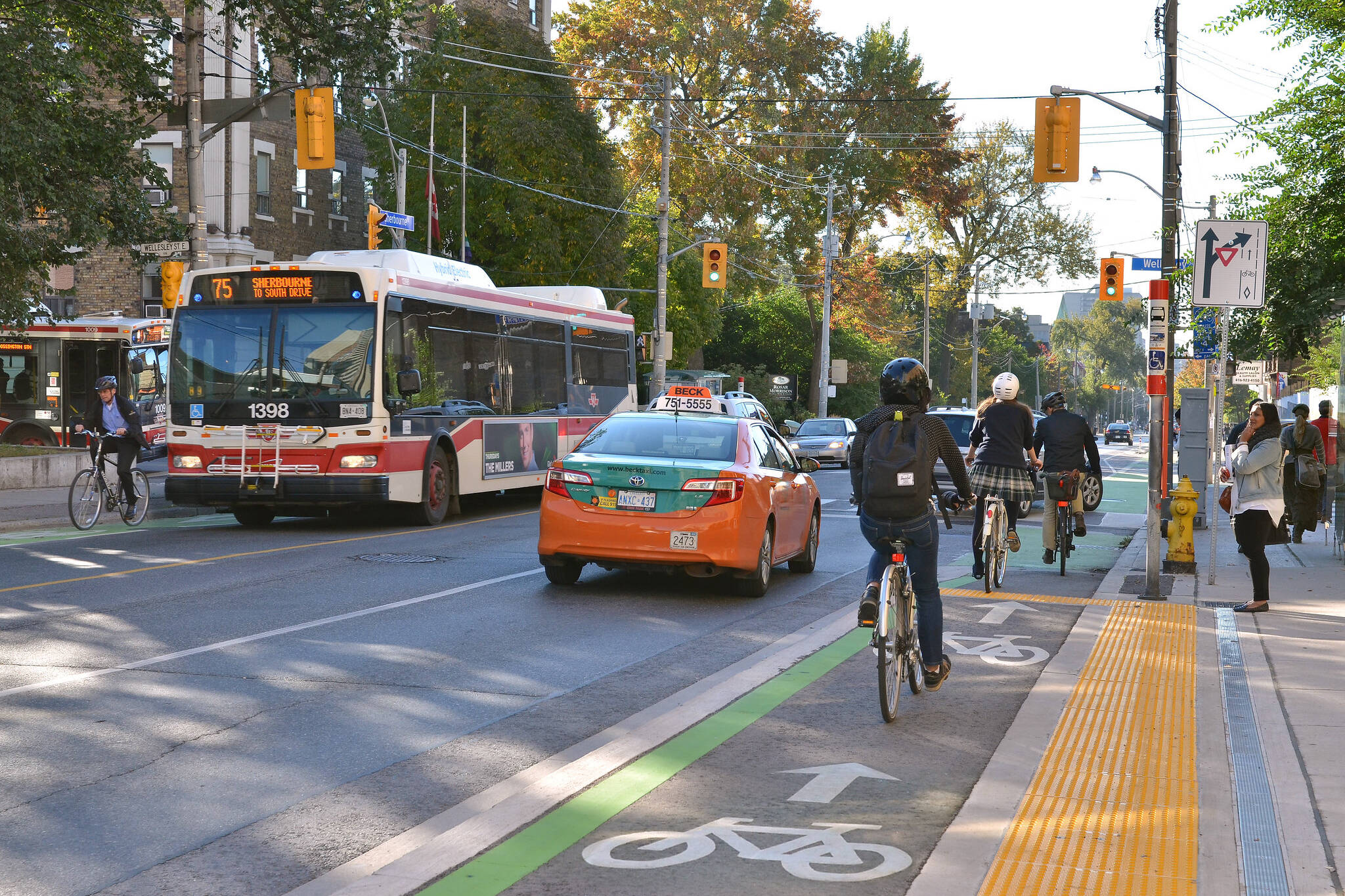
Pioneering study finds bike lanes have doubled the number of cyclists in parts of Toronto
Bikes are big in Toronto, and according to a recent study, they're only getting bigger.
Raktim Mitra, associate professor at Ryerson's School of Urban and Regional Planning, has just released a report whose findings indicate that not is cycling growing in Toronto, it's doing so as a direct result of the city's expanding cycling infrastructure.
"The study results indicate there are 2.26 times higher odds of increased bicycling on streets with a new on-street cycling facility compared to locations without one,"says the press release that accompanied the report yesterday, "and that regular cyclists were 2.28 times more likely to bicycle almost every day for commuting following the addition of a local cycling facility."
The study, conducted with Dr. Paul Hess at the University of Toronto and The Centre for Active Transportation (TCAT), found that neighbourhoods with more bicycle lanes, cycle tracks and bikeways have more than double the number of cyclists on streets than neighbourhoods that don't.
Mitra says their report is one of the first comprehensive studies to establish a causal relationship between cycling infrastructure and increased numbers of cyclists.
"We compared the increase in cycling rates in 11 neighbourhoods with a cycling faculty, with 6 similar neighbourhoods without any cycling faculty," says Mitra. "The results show that the rate of increase in cycling uptake was statistically higher in neighbourhoods with cycling facilities, when compared to sites without facilities."
The team's interactive dashboard shows data from 2019, depicting cycling behaviour in neighbourhoods with or without cycling facilities, including Woodbine, Danforth and Dufferin.
Mitra says that cycle tracks – bike lanes separated from car traffic by physical barriers – increase cycling more than painted bicycle lanes.
There is also a gender component.
"We did see that there was a greater increase in women bicycling when there was a cycling facility," says Mitra."This is good news because one of the things that we argue as academics is that cycling facilities are a good way to increase cycling among women and improve gender equtiy in cycling."
Their research also found an overall growth in cycling among different groups of people with varying incomes.
They established that regular cyclists in high-income groups (over $70,000) were cycling even more than before, and people in lower-income groups ($35,000-$70,000) who had not been regular cyclists were also cycling more.
"The hope is that with the results being out and with data being made to some extent public, this data can be a tool for stronger advocacy toward cycling and cycling infrastructure," Mitra says.
Latest Videos
Latest Videos
Join the conversation Load comments







